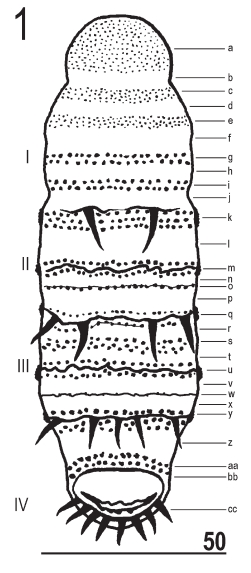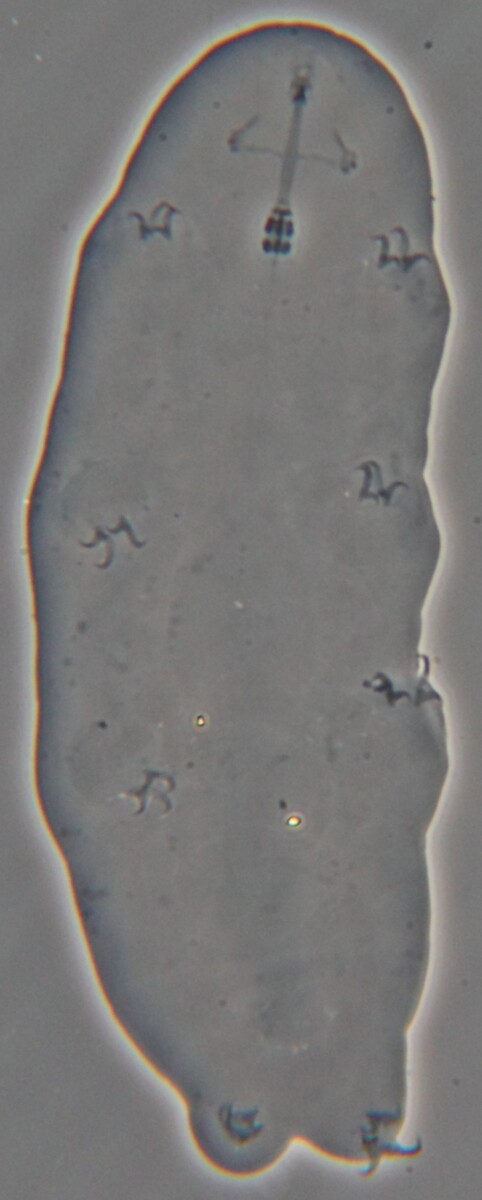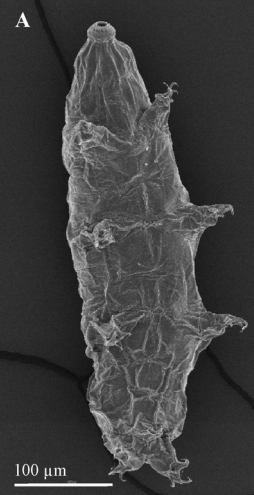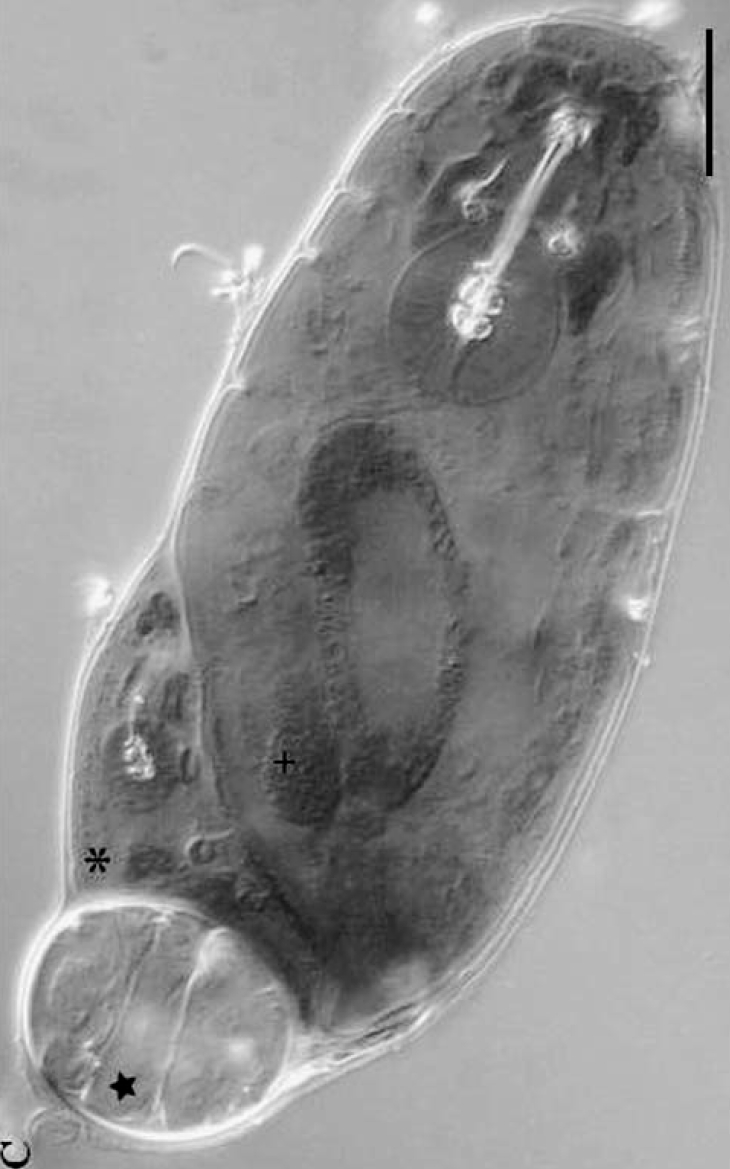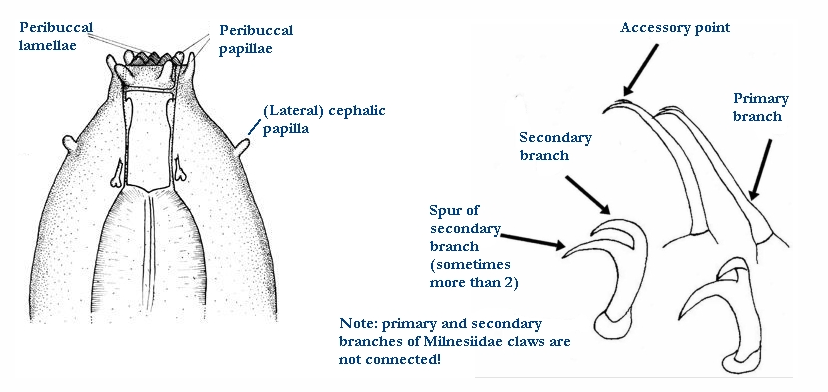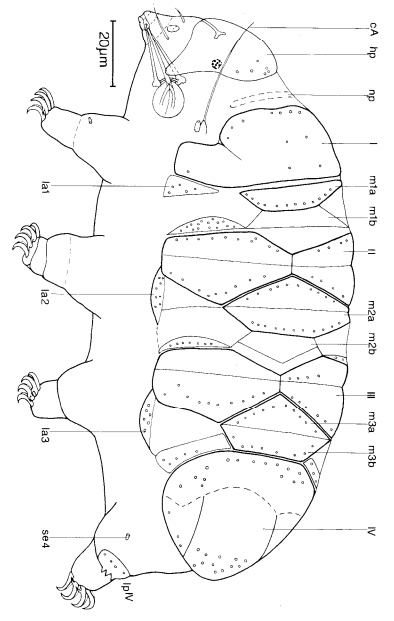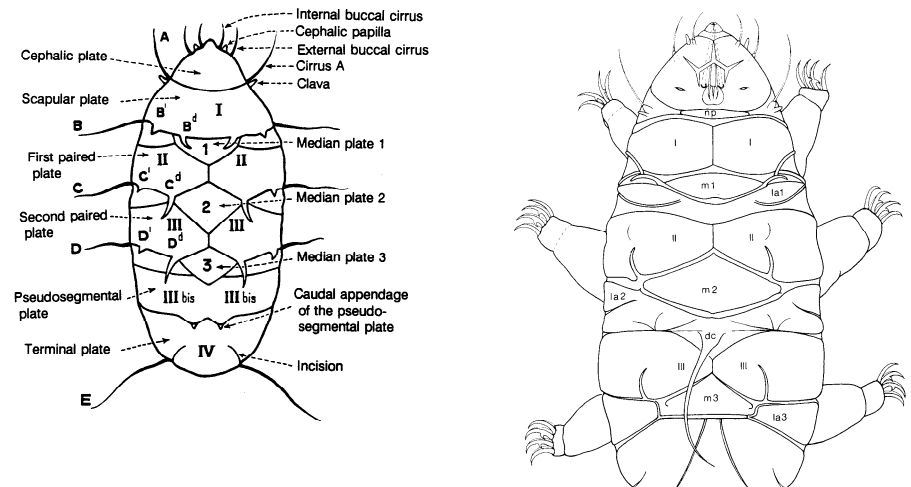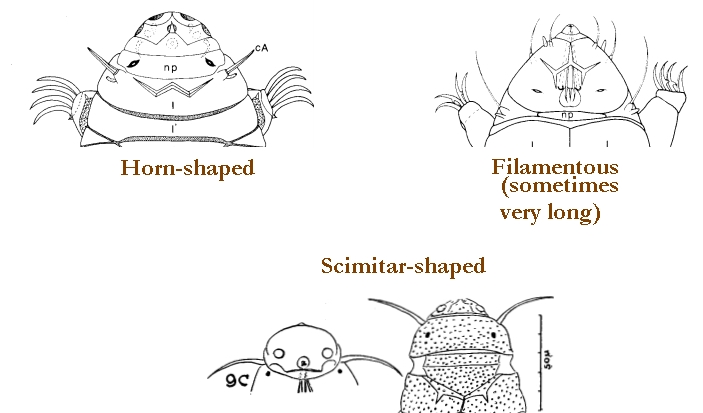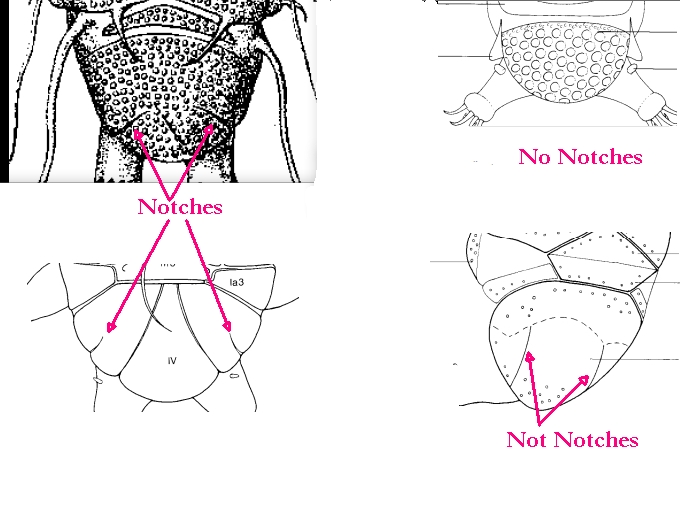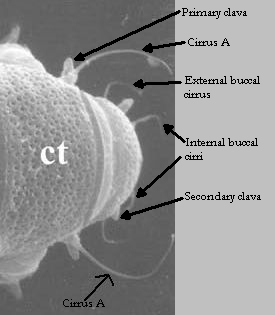Tardigrade Key
Lateral cirri A
(Lateral) cephalic papillae, peribuccal papillae, Milnesiidae-type claws, exceptionally wide (and usually short) buccal tube
Articulated or folded legs?
- N/A
Pharyngeal Tube With Spiral Reinforcement
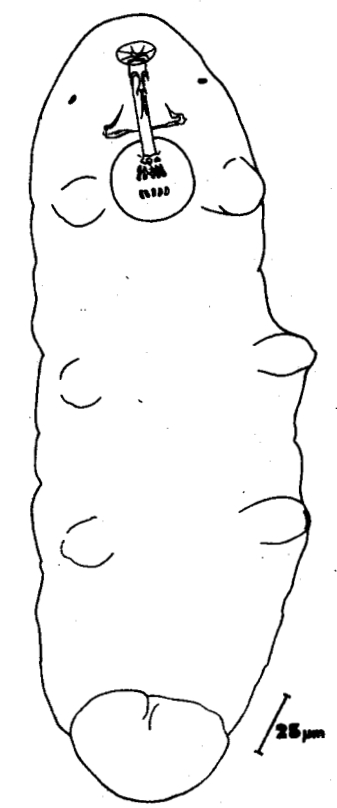
Apodibius
Isohypsibioidea from Marley et al. 2011: “Parachela. Claws asymmetrical (2121); Isohypsibius-type claw pairs;
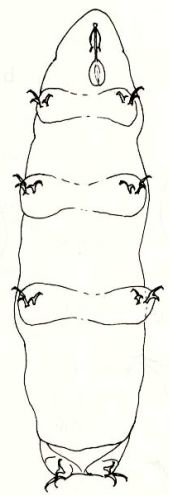
Parascon
Hypsibioidea from Pilato 1969 in Marley et al. 2011: “Parachela; claws asymmetrical (2121); Hypsibius-type
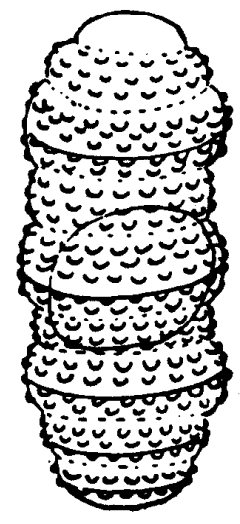
Fractonotus
Hypsibioidea from Pilato 1969 in Marley et al. 2011: “Parachela; claws asymmetrical (2121); Hypsibius-type
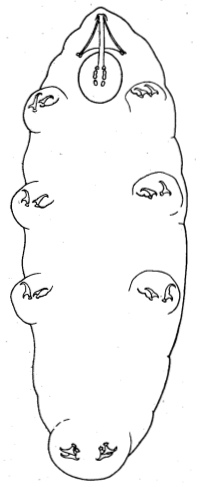
Eremobiotus
Isohypsibioidea from Marley et al. 2011: “Parachela. Claws asymmetrical (2121); Isohypsibius-type claw pairs;

